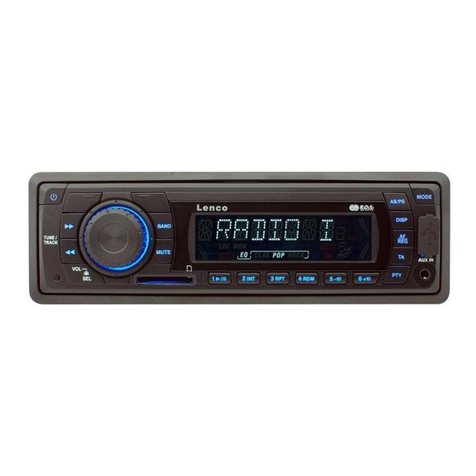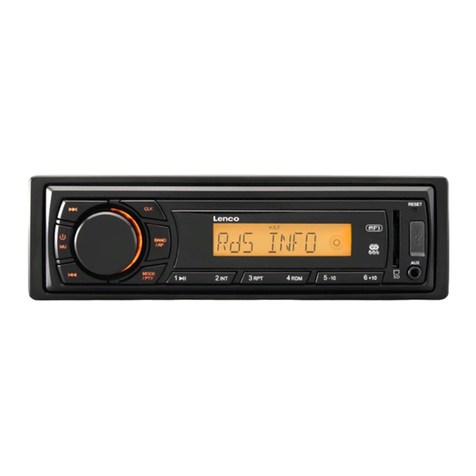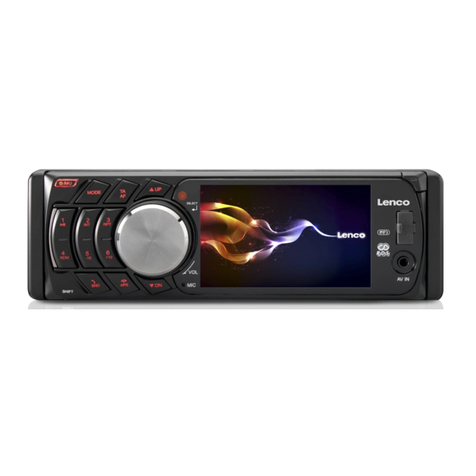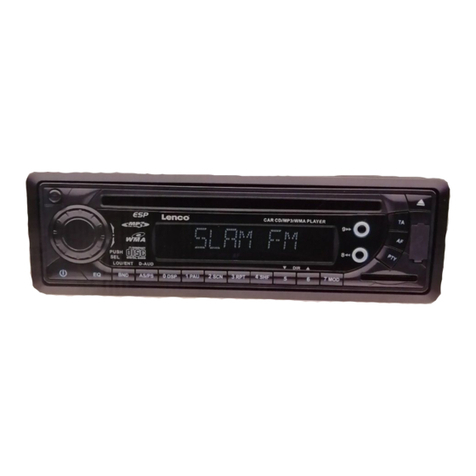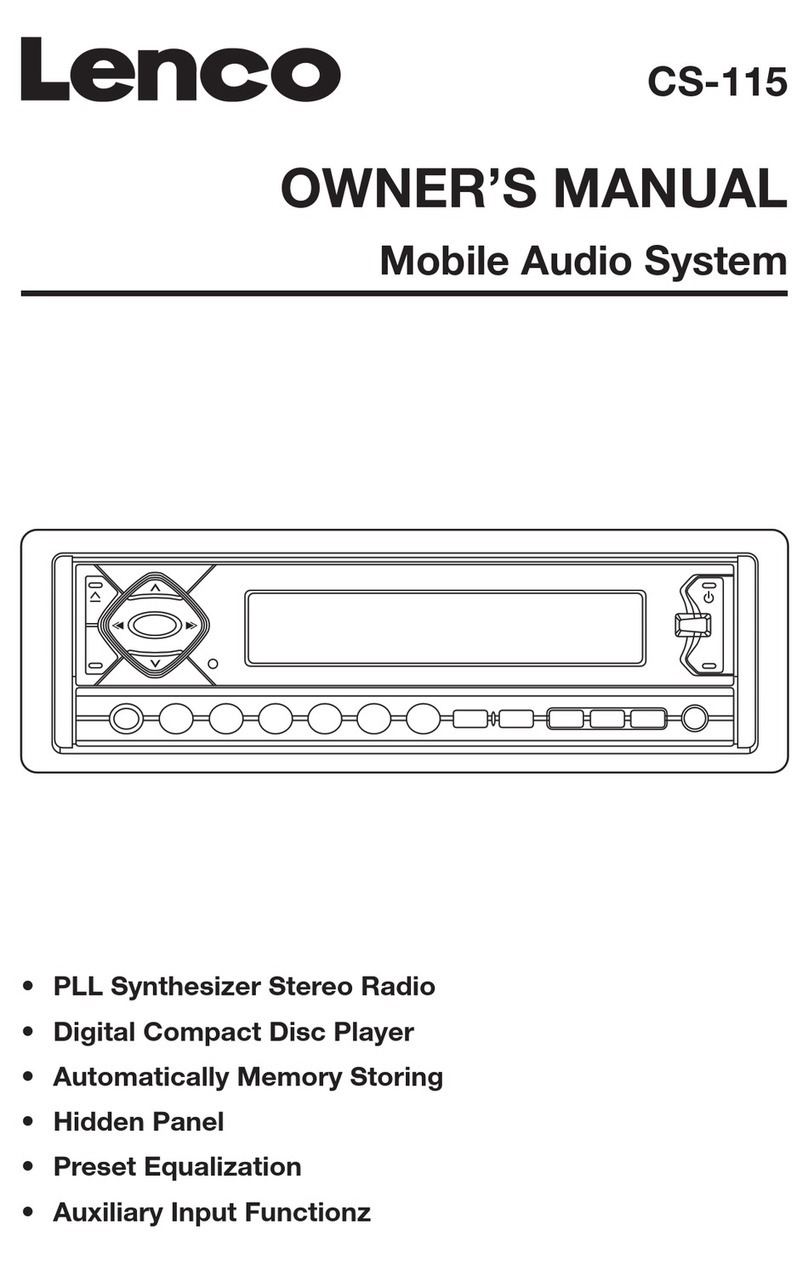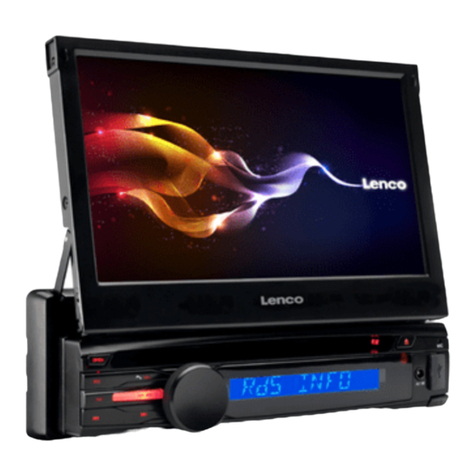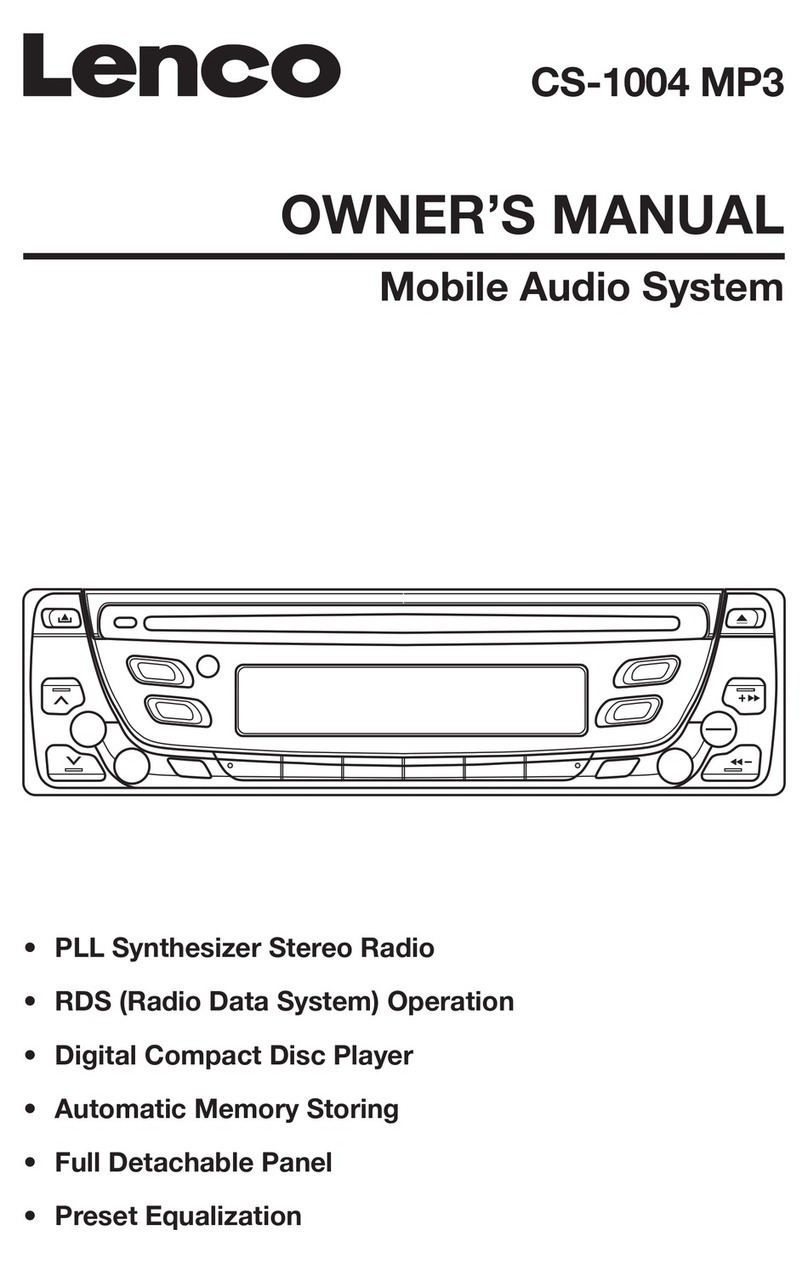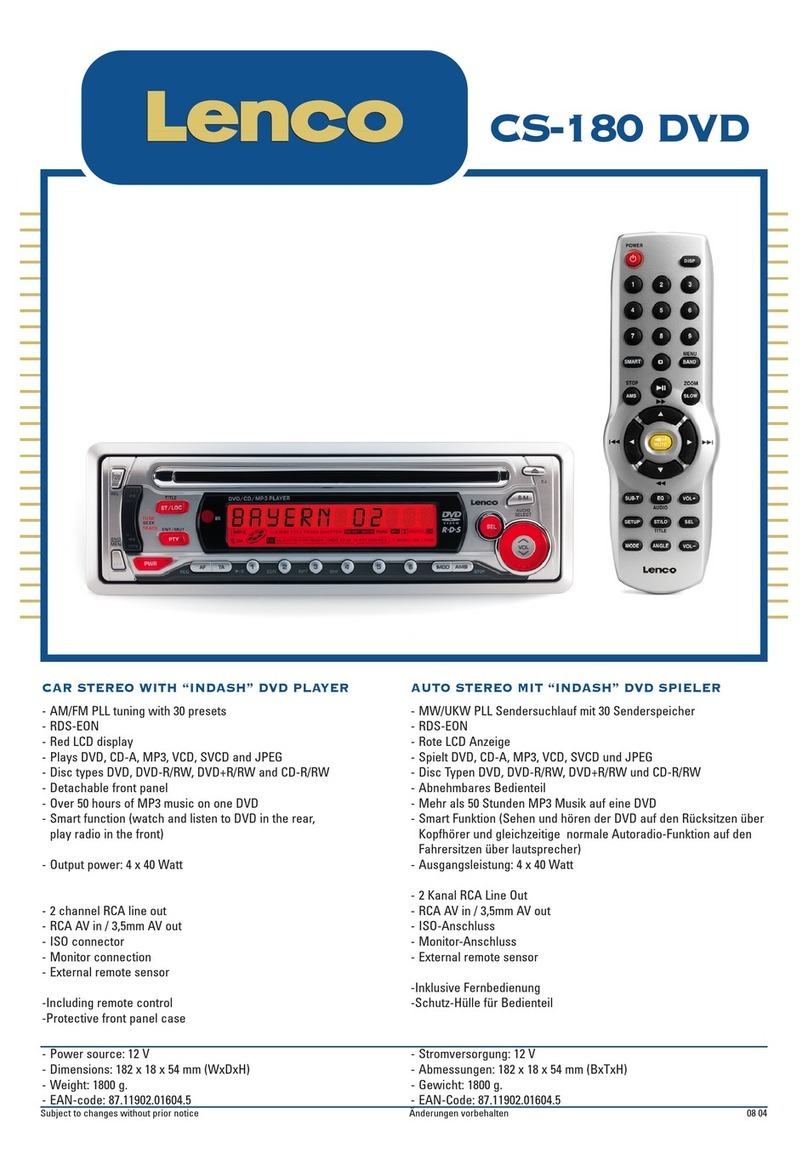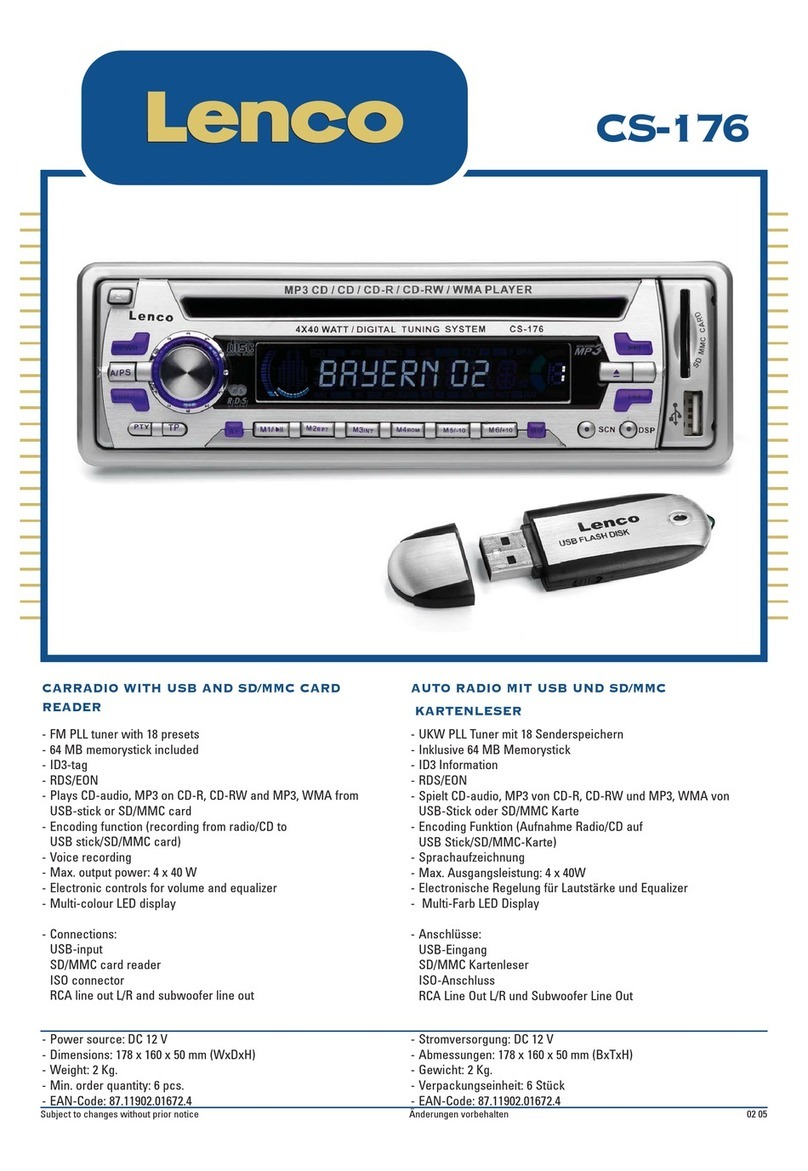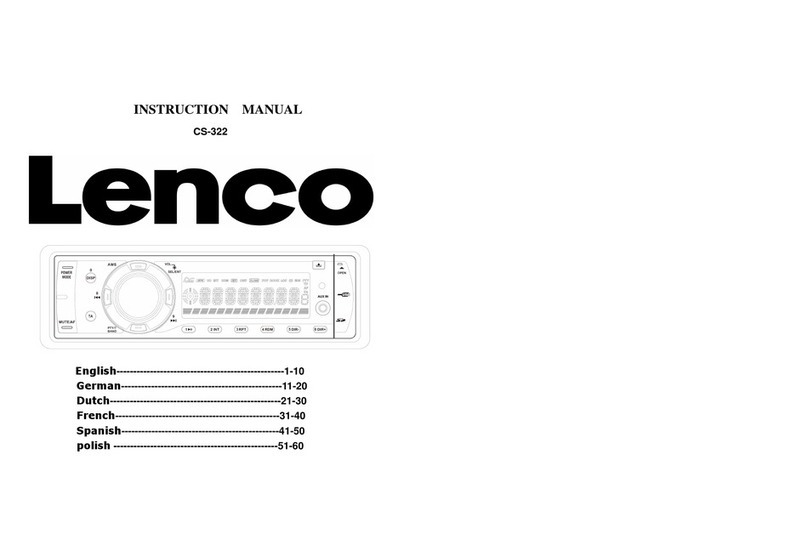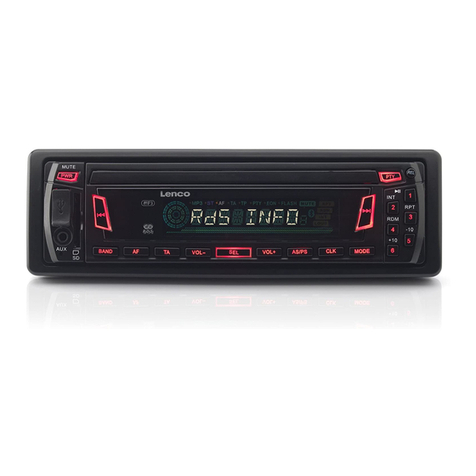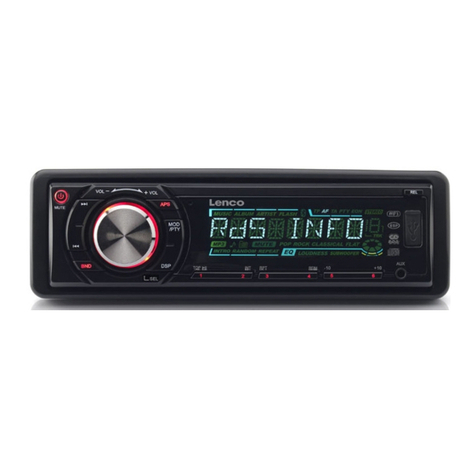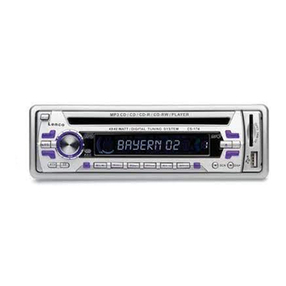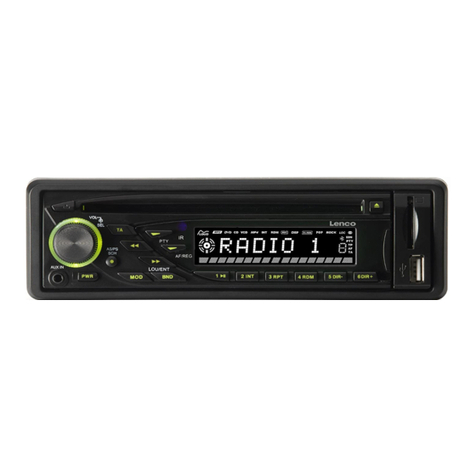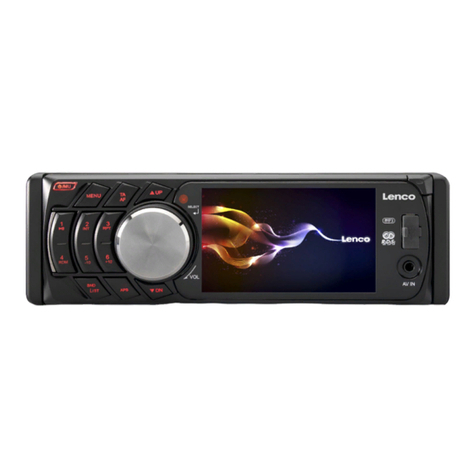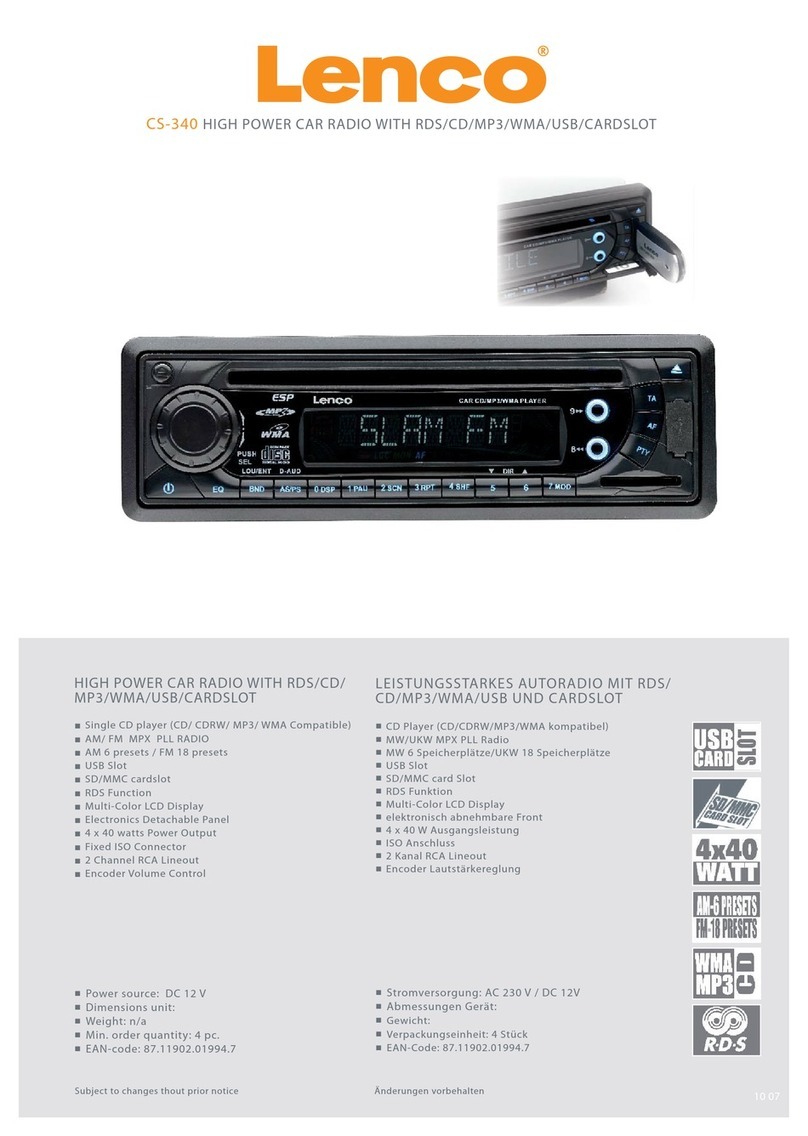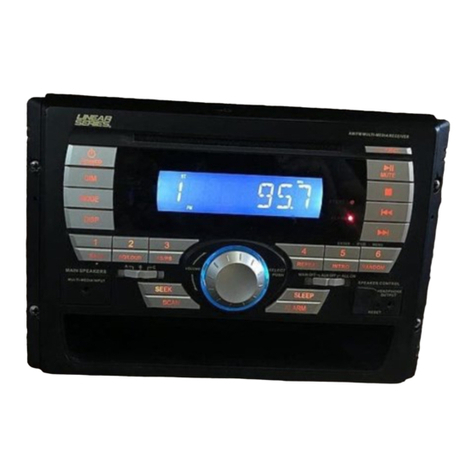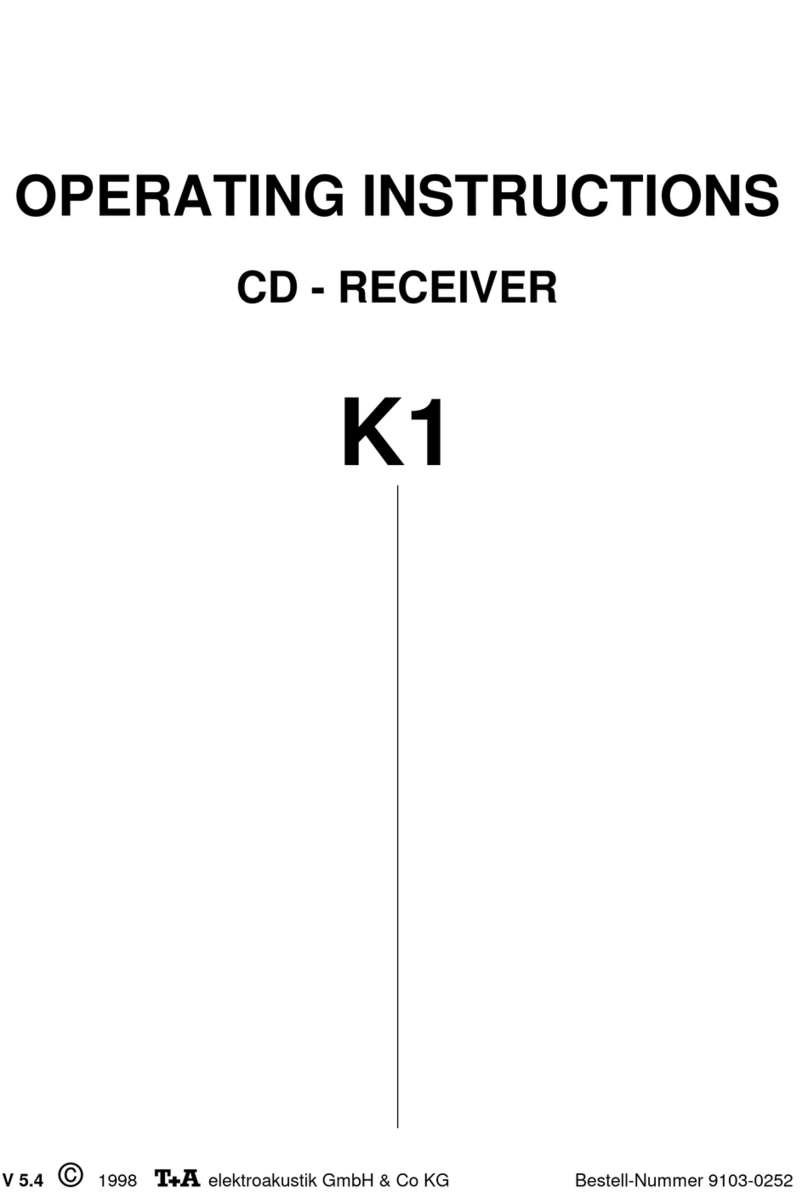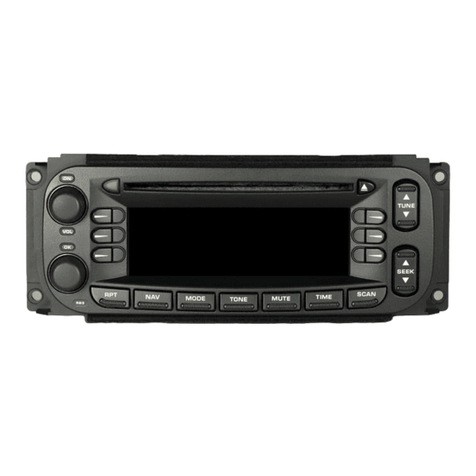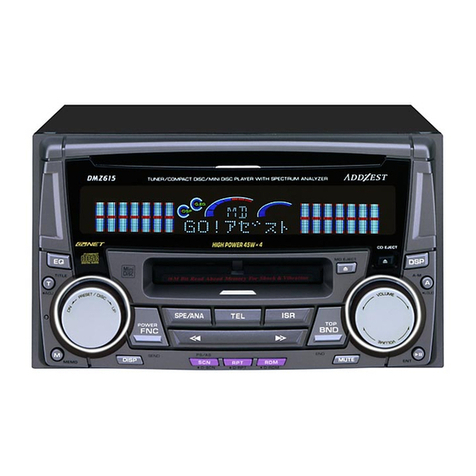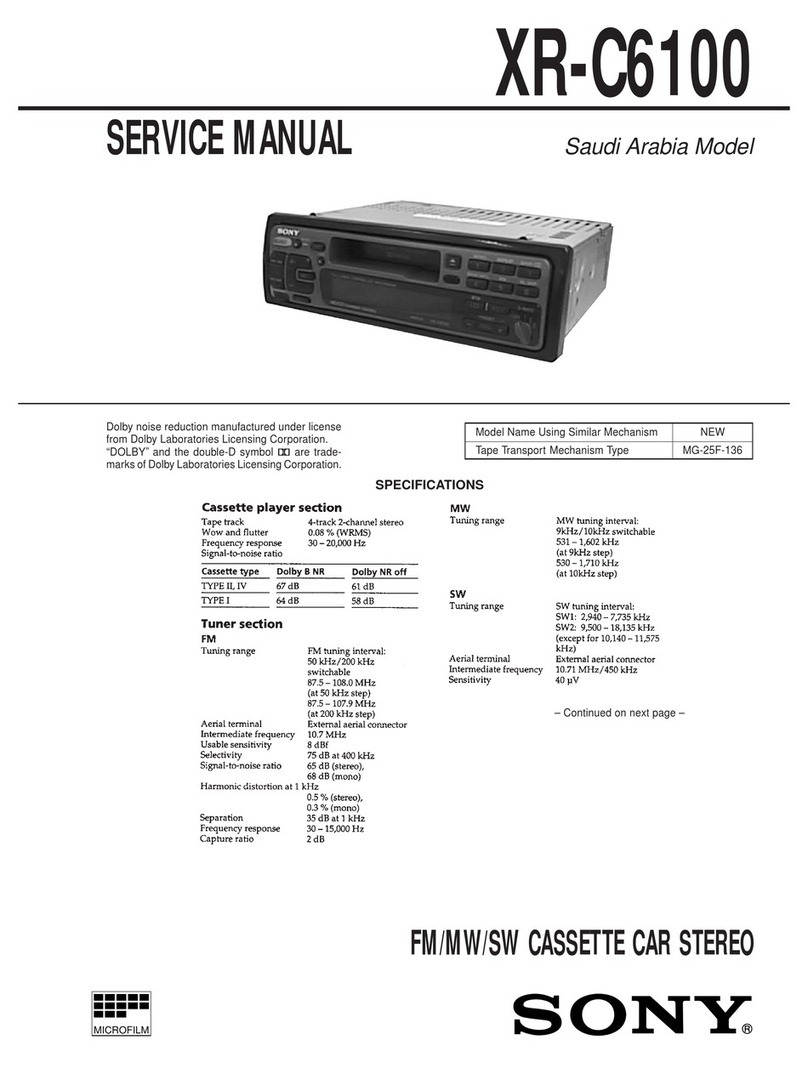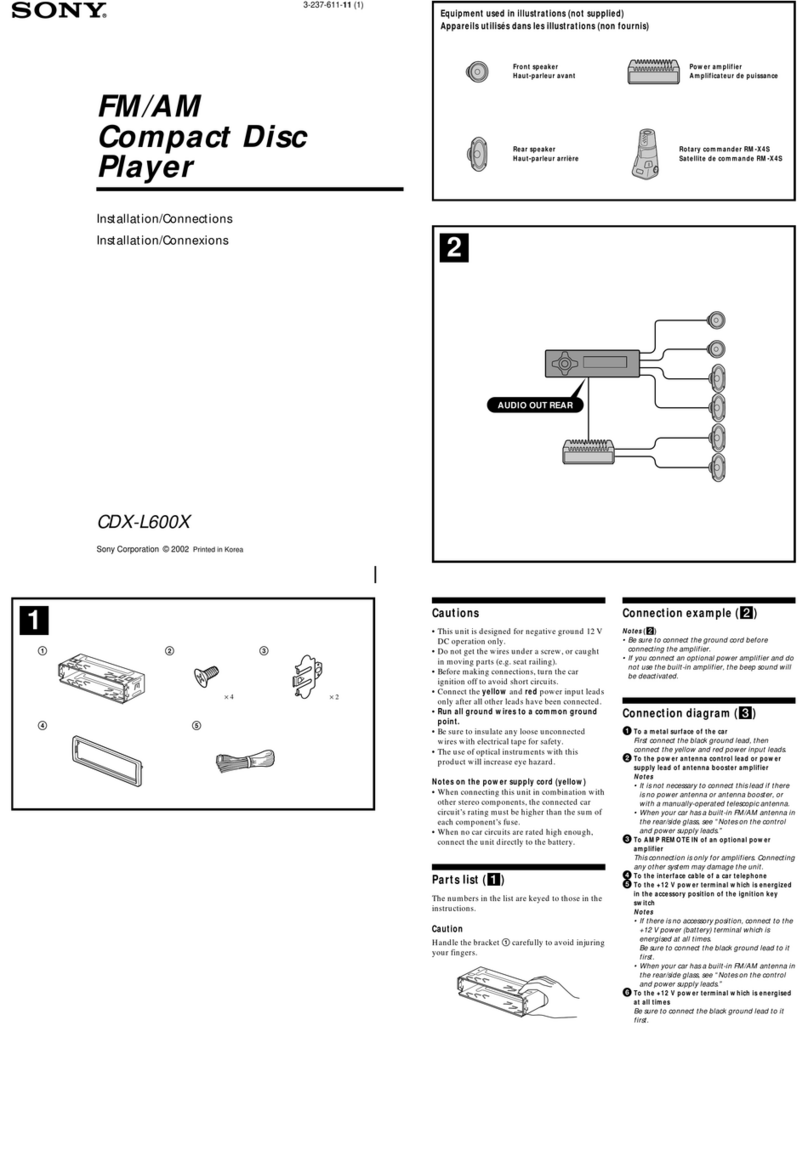Basic Operation
1. REL BUTTON
Press the REL button to fold down the front control panel.
Then a disc can be inserted into the disc slot or ejected by pressing the EJ button.
After flipping down the front panel, push it leftwards, then pull the right side of the panel outwards to
remove it from the unit chassis.
2. SEL BUTTON (Select)AND VOL KNOB
A) Press the SEL button briefly, it is activated as selecting each mode of E. VOL.
-> VOLUME ->BASS ->TREBLE -> BALANCE -> FADER ->
When selecting a desired audio mode, rotate the VOL knob to adjust the audio effect.
In each mode, the waiting time is about 5 seconds, and the time waiting time is over, it returns to the
last display mode of tuner or CD mode.
The control mode of E.VOL is operated with following numeric display.
- VOL: (MIN)00, 01,......46, 47(MAX).
- BASS/TRE: -07, -06,...,00,...+06,+07
- BAL: 0LR9, 1LR9, ..., 9LR9,..., 9LR1, 9LR0
- FAD: 0FR9,1FR9, ..., 9FR9,..., 9FR1, 9FR0
B) When pressed longer 2 seconds, it is activated as cyclical mode of following functions for
user’s selection.
->TA (ON/OFF) ->AF (ON/OFF) ->TA (ALARM/SEEK) ->PI (SOUND/MUTE) ->
RETURN (LONG/SHORT) ->MASK(DPI/ALL) ->BEEP (ON/OFF) -> USER SET
(FLAT/CLASSIC/ROCK/POP)->VOL(LAST/DEFA) ->MONO/STEREO(only for
FM mode) ->LOUD(ON/OFF)->LOCAL/DX(only for FM mode)->CLK(ON/OFF)
->CLK(12/24)mode.
After selecting the desired mode, rotate the VOLknob to select one setup item of the desired mode.
1)TA ON/OFF
When TA mode is on(TA is displayed on LCD), it will begin to seek TA station and TA SEEK will be
displayed on LCD for a while.
When traffic announcement is transmitted:
a) If the unit is in SD, USB or disc mode, it will switch to radio mode temporarily.
b) Temporarily switch over to an EON linked station when EON detects a traffic announcement on that
other program, and TP will be displayed on LCD.
c) If volume level is below 20, volume level is raised to 20, and returns to its previous mode and volume
level when the traffic announcement is over.
If volume is adjusted during traffic announcement, only the traffic announcement volume is valid.
* TA interruption function:
The current traffic announcement is cancelled by pressing this key. But the TA mode will not be off.
* When TAis on, SEEK, (SCAN),AUTO MEMORY function can be received or saved only when traffic
program identification code has been received. When TA is ON, traffic program identification code is
not received during specified time.
